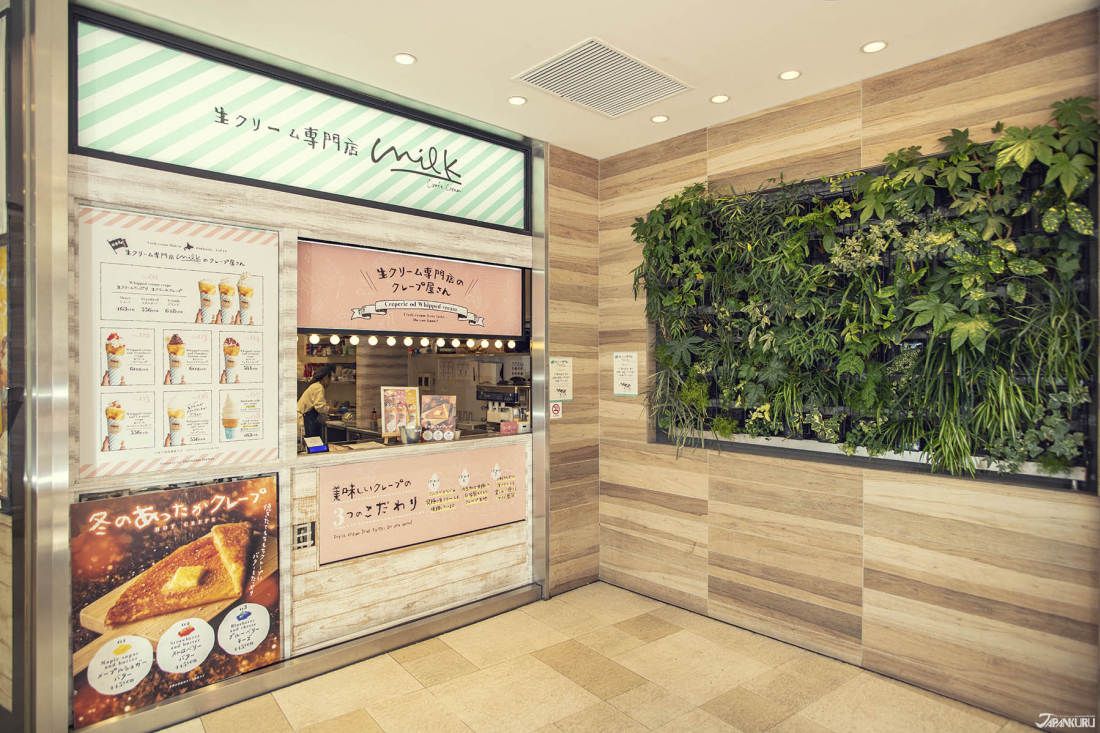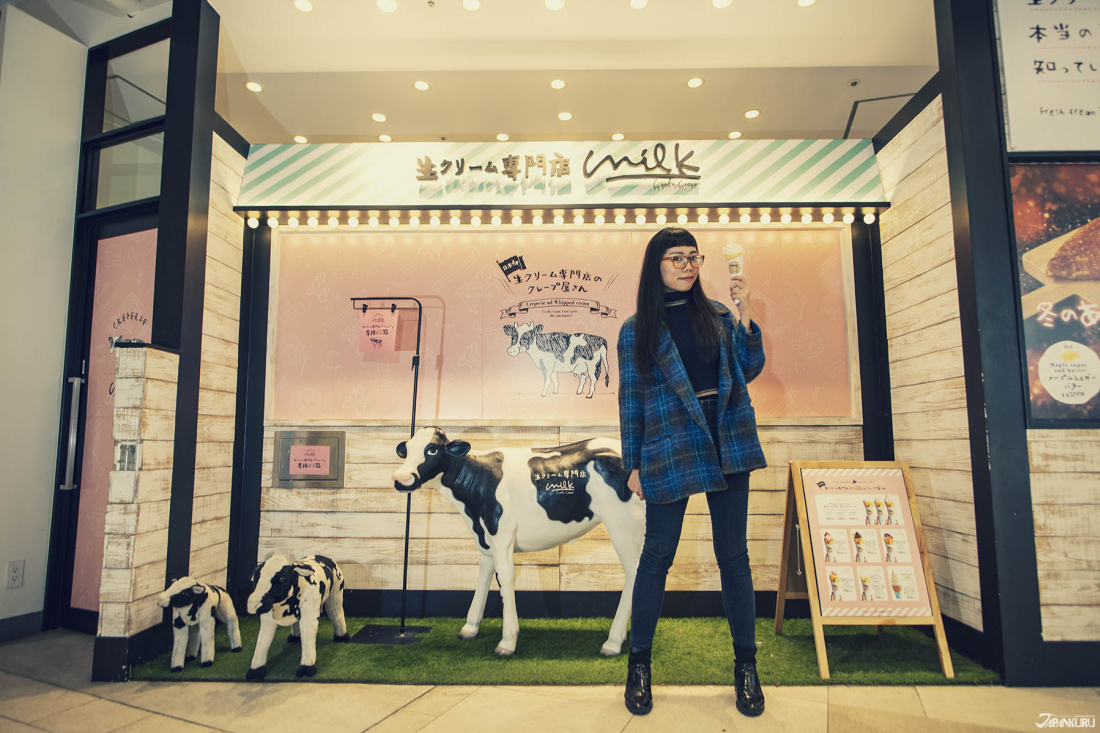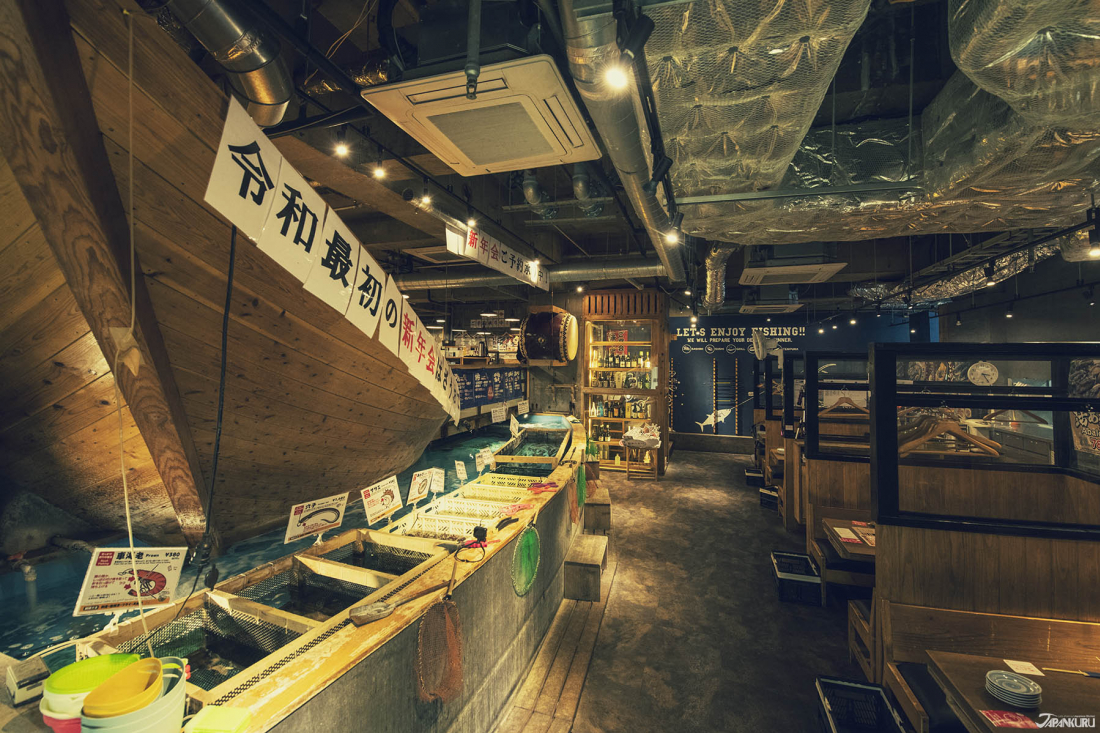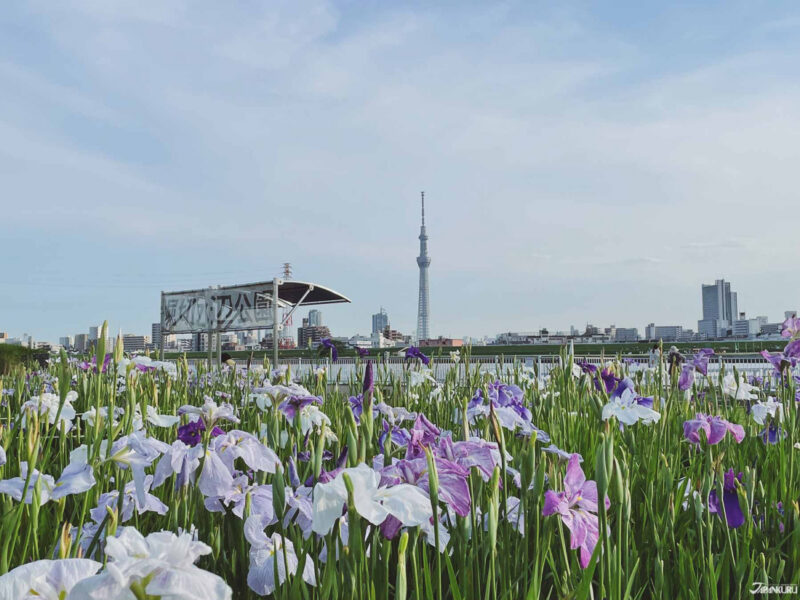
CONTENTS
Ready to meet your friends at Hachiko (the Shibuya dog statue) and head out onto the city streets… but not sure where in Shibuya to stop first? Well, whether you want to spend your time sampling Shibuya eats, singing karaoke and hanging out like a local Tokyoite, or you’re really just looking for a Shibuya shopping guide, check out some of JAPANKURU’s Shibuya destination recommendations!
Tokyo Sightseeing
First things first: if this is your first visit to Shibuya, you probably won't want to miss the go-to, must-see symbols of the area! Unless you get lost wending your way through the train station (and its many, many exits), most of these symbolic images of Shibuya should be apparent as soon as you get outside. One of the most popular train station exits is named after Shibuya's most beloved dog, and the statue of loyal akita Hachiko is right in front of the station building (which is what makes it such a popular meeting point)! If you want to spend a few minutes lining up, you too can get a picture with this pup, memorialized on a pedestal in the middle of the crowds.
Walk away from Hachiko and towards the street corner, and you'll find yourself at the famous Shibuya Scramble! Walk right into the middle of this huge street crossing, surrounded by hundreds or even thousands of other people who all seem to be crossing in different directions at the same time, and soak up the Shibuya atmosphere! In one direction is the famous Shibuya 109 building, in the other is Shibuya's slightly less photographed but equally populated Second Scramble, and everywhere else are shops, restaurants, and plenty of crowds… and this is the point where many travelers get a little lost.
Now that you're in Shibuya, there's so much to do and see, where do you even start!? Well, we've got a few suggestions!
Shopping & Snacks
Shibuya Marui (0101)
Among the many shopping malls and department stores in Shibuya, Marui is a must-see. One of the most popular department store chains in Japan, it's a clear destination in Shibuya, with plenty of clothes, accessories, and even some tasty snacks!
Shibuya Marui (渋谷マルイ)
1-22-6 Jinnan, Shibuya City, Tokyo
Hours: Mon~Sat 11:00 – 21:00/Sun & Holidays 11:00 – 20:30
Official Website (en)
In fact, if you're in the mood for some nibbles, you might just be interested in this window right at the entrance to Shibuya Marui. Milk is a fresh cream specialty shop, and their most popular offering is delicious in its utter simplicity: crepes stuffed and piled high with fresh whipped cream, made with Hokkaido cream! Hokkaido is famous for its high-quality dairy, so it's no wonder this place is always busy.
Their basic whipped cream crepes come in three sizes, which decide exactly how high and majestic the pile of whipped cream on top ends up being: short, standard, and grande.
Fresh, creamy, and sweet without being saccharine, it's a perfect snack during a busy day exploring Shibuya. We certainly felt energized and ready to go. Plus, you can take a commemorative photo with their cows. Very thematic!
Milk Craft Cream
Shibuya Marui 1F, 1-22-6 Jinnan, Shibuya City, Tokyo
Hours: Mon~Sat 11:00 – 21:00/Sun & Holidays 11:00 – 20:30
Official Website (en)
If you want more than just a commemorative photo from your time in Shibuya, we recommend you head upstairs to make your very own mementos at Brooklyn Charm. While they have a selection of premade accessories available for purchase, the real draw here is that you can design and create your very own items: necklaces, earrings, rings – you can even decorate shoes!
One of many options: design pieces like the ones above, featuring delicate wire art, intricately shaped and woven by a local Tokyo artist.
No need to make reservations, just show up whenever you want, and get started! You'll have your own custom piece ready to take home in a matter of minutes.
Those aren't the only charm options, though!
They've got parts of all kinds, using stones, other bits of natural materials, and metals made into charms of all shapes and sizes. Even the accessory bases come in different metals and different colors. Whatever your style, you'll find some bits and pieces that are right up your alley.
Once you've found some pieces you like, it's time to start in on the DIY! The level of detail and difficulty you want to get into is up to you. If you choose a more complex design and get intimidated by some parts of the process, though, the staff are always happy to jump in and take over. You can do exactly as much of the creation, or as little, as you want!
The staff are super helpful, and some are even fluent English speakers, but if nobody at the shop can help you in your language of choice, they always have written instructions you can read through for some hints. And if you fall in love with your new accessory and want to make some more, you can always stop in at their other locations in the Yurakucho Marui and Laforet Harajuku.
Brooklyn Charm WORK SHOP
Shibuya Marui 2F, 1-22-6 Jinnan, Shibuya City, Tokyo
Hours: Mon~Sat 11:00 – 21:00/Sun & Holidays 11:00 – 20:30
Official Website (jp)
Shibuya MODI
Just down the street is MODI, which is a mall with a different kind of vibe. It's a popular place to just chill out for a while and spend some time, with an interesting variety of shops, restaurants, pop-up stores, and even karaoke.
Shibuya MODI
1-21-3 Jinnan, Shibuya City, Tokyo
Hours: 11:00 – 21:00
Official Website (en)
We decided to hang out for a while with this guy. His name, apparently, is Tom.
Tom is the barista at Henn na Cafe (変なカフェ), a little coffee shop tucked away on the basement floor of MODI. Tom, as you might have noticed, is a robot, which makes sense when you consider that the "henn" (変) in the cafe's name can mean both "strange" and "change." The use of a robot barista is certainly an unusual change from the norm!
The whole process of obtaining your drink is basically automated, for a cool, futuristic experience. Once you choose your beverage from the vending machine, it gives you a small slip of paper with a QR code on it. You then scan that barcode at the barista station, give Tom a cup to make your drink in, and he gets to work!
His one fancy robot arm gently grips the cup and takes it to all the different stations, making your drink one step at a time.
We grabbed some ice coffees.
But for those who like drinks with a little more pizzazz, the cafe has a little counter where they offer a whole selection of syrups that you can freely add to your drink for extra flavor. They even have simple instructions for some DIY latte art. We actually found it surprisingly doable!
Henn na Cafe (変なカフェ)
Shibuya MODI B1F, 1-21-3 Jinnan, Shibuya City, Tokyo
Hours: Weekdays 12:00 – 20:00/Weekends & Holidays 11:00 – 20:00
Official Website (en)
To spend the afternoon like a true local, head right up to the 8th floor of MODI after your coffee, to belt out some tunes at Rainbow Karaoke. While they have some compact standard rooms as well, the star of the show at Rainbow Karaoke is… this studio room! Forget microphones and tambourines, this impressive room is designed for bigger groups, and has a guitar, a bass, a drum kit, a keyboard, and even a DJ booth, all at your disposal. Unsurprisingly, it's a popular room for karaoke singers of all ages, so make reservations if you want to stop in! Although, while it's generally reserved for groups of 10 or more, if you arrive at Rainbow Karaoke and the studio room happens to be open and unused, you can actually hop in with any number of people!
Look closely and you'll see that the decorations are their take on New York. Except it's all much more stylish, and cleaner, than a real NYC street!
When going to karaoke in Japan, the general rule is that you have to order one drink per person, but you probably won't have much trouble here. They've got a huge variety of tempting options, alcoholic and not, plus some intriguing snacks. We hear their pizza is pretty good!
They also have VIP rooms, which are a pretty good option for parties, whether you want to sing all night or not. Aside from the karaoke setup, the rooms also have DVD players and nice speakers. Rent a DVD nearby for a little viewing party! If the weather outside is especially chilly, or unbearably hot and humid, escape to the comfy couches for an hour until you're ready to face Tokyo again. Or stay until 5 in the morning, that's fine too!
Rainbow Karaoke
Shibuya MODI 8F, 1-21-3 Jinnan, Shibuya City, Tokyo
Hours: 11:00 – 5:00 (the next morning)
Official Website (jp)
Shibuya Restaurants
Fishing Restaurant ZAUO
"Fishing restaurant?" You may be thinking. "What does that even mean?"
The answer is that ZAUO is exactly what it sounds like – a restaurant where you can go fishing on the premises, and then eat what you catch then and there! For all those sushi and seafood lovers looking for super-fresh food while they're in Japan, it doesn't get much fresher.
Success! We caught some fish.
Of course, when ordering involves choosing and then successfully catching your fish of choice, it can get a little complicated, so ZAUO set up this simple ordering system for new visitors. Go for the Fishing Set Course, and you'll get a plate of sushi, some tempura and other sides, and 3 "Fishing Cards." Just check the simple table to figure out how many cards each fish is worth, and trade in your cards to go fishing! If you need more cards for your fish of choice, you can always purchase some extras for 418 yen each.
Once you've caught your fish, you can also choose from a few different cooking options. Pick whatever sounds most delicious, and the chefs will get right on it!
You've traded in your cards, and it's time to go fishing! Staff will hand you a rod, get a net ready, and point you towards the right kind of fish. The rest is on you!
Of course, once a fish is caught you can't put it back, so make sure you know what you're going for.
If you've got kids who want to learn a little about sushi while in Japan, stop in for a ZAUO sushi workshop, where they can put on little ZAUO uniforms and get to work! The teachers don't necessarily speak English, so they have a whole pile of explanation cards to help English-speakers follow along. It's a little like having subtitles in real life! At the end, kids receive a sushi class diploma to finish off the experience.
ZAUO Sushi Classes
Reservations Necessary – Available on Saturdays, Sundays, and Holidays
13:00~
Workshop Fee: 3,850 yen
Official Workshop Page (en)
Before you head home, you might just be drawn in by their impressive selection of merchandise. Aside from simple items emblazoned with the shop name and location, they've got a pretty fun selection of items with fish-themed illustrations. The towels printed with fish names in Japanese are especially popular, and we have to agree, all those kanji characters look pretty cool! After you've had fun fishing, you'll be heading out of the shop with a full belly, and probably arms full of souvenirs as well.
For true fans of the experience, or travelers who aren't aiming to visit Shibuya, stop by their Shinjuku and Meguro locations as well.
Fishing Restaurant ZAUO Shibuya Branch
1-19-3 Jinnan, Shibuya City, Tokyo
Weekday Hours: 17:00 – 23:00
Weekend Hours: 11:30 – 14:30 & 16:00 – 23:00
Official Website (en) ・ Reservations
Insta-Worthy Izakaya – Yonesuke (米助)
If you're more of a meat person, you might want to head towards Yonesuke while you're in Shibuya. Their popular "Meat Volcano Hotpot" arrives in the form of a true mountain of meat and veggies, and a tasty one at that.
And while their flashy hotpot platters are pretty impressive, their Japanese-style grilled skewers go pretty perfectly with a glass of wine.
Head over in the evening with some friends, and party till the early hours of the morning! When in Rome!
Yonesuke (米助)
25-6 Udagawacho, Shibuya City, Tokyo
Hours: Mon~Thur & Sun 16:00 – 24:00/Fri~Sat 16:00 – 5:00 (the next morning)
Official Website (en)
For a Taste of What’s Fresh and New in Tokyo, Head to Shibuya!
Have you been to Shibuya before? Have you been there a thousand times? Let us know about your experiences in Tokyo, and your plans for the big city, on twitter, instagram, and facebook!
Details
NAME:Shibuya
MAP




































 >> Find out more at Japankuru.com! (link in bio)
#
>> Find out more at Japankuru.com! (link in bio)
#





 The Robot Restaurant is gone, but the Samurai Restaurant is here to take its place. Check it out, and don't forget your coupon!
The Robot Restaurant is gone, but the Samurai Restaurant is here to take its place. Check it out, and don't forget your coupon!
 신주쿠의 명소 로봇 레스토랑이 사무라이 레스토랑으로 부활! 절찬 쿠폰 발급중
신주쿠의 명소 로봇 레스토랑이 사무라이 레스토랑으로 부활! 절찬 쿠폰 발급중
 18歲以上才能入場的歌舞秀,和你想的不一樣!拿好優惠券去看看~
#tokyo #shinjuku #samurairestaurant #robotrestaurant #tokyotrip #도쿄여행 #신주쿠 #사무라이레스토랑 #이색체험 #할인이벤트 #歌舞伎町 #東京景點 #武士餐廳 #日本表演 #日本文化體驗 #japankuru #japantrip #japantravel #japanlovers #japan_of_insta
18歲以上才能入場的歌舞秀,和你想的不一樣!拿好優惠券去看看~
#tokyo #shinjuku #samurairestaurant #robotrestaurant #tokyotrip #도쿄여행 #신주쿠 #사무라이레스토랑 #이색체험 #할인이벤트 #歌舞伎町 #東京景點 #武士餐廳 #日本表演 #日本文化體驗 #japankuru #japantrip #japantravel #japanlovers #japan_of_insta
 코지마 x 빅 카메라 쿠폰으로 일본 가전 제품 쇼핑하기
#pr #japankuru #japanshopping #kojima #biccamera #japaneseskincare #yaman #dji #osmopocket3 #skincaredevice #日本購物 #美容儀 #相機 #雅萌 #日本家電 #일본여행 #면세 #여행꿀팁 #일본쇼핑리스트 #쿠폰 #일본쇼핑 #일본브랜드 #할인 #코지마 #빅카메라 #japankurucoupon
코지마 x 빅 카메라 쿠폰으로 일본 가전 제품 쇼핑하기
#pr #japankuru #japanshopping #kojima #biccamera #japaneseskincare #yaman #dji #osmopocket3 #skincaredevice #日本購物 #美容儀 #相機 #雅萌 #日本家電 #일본여행 #면세 #여행꿀팁 #일본쇼핑리스트 #쿠폰 #일본쇼핑 #일본브랜드 #할인 #코지마 #빅카메라 #japankurucoupon
































 Oita Hello Kitty Airport
Oita Hello Kitty Airport  Lands April 13th
Lands April 13th





















